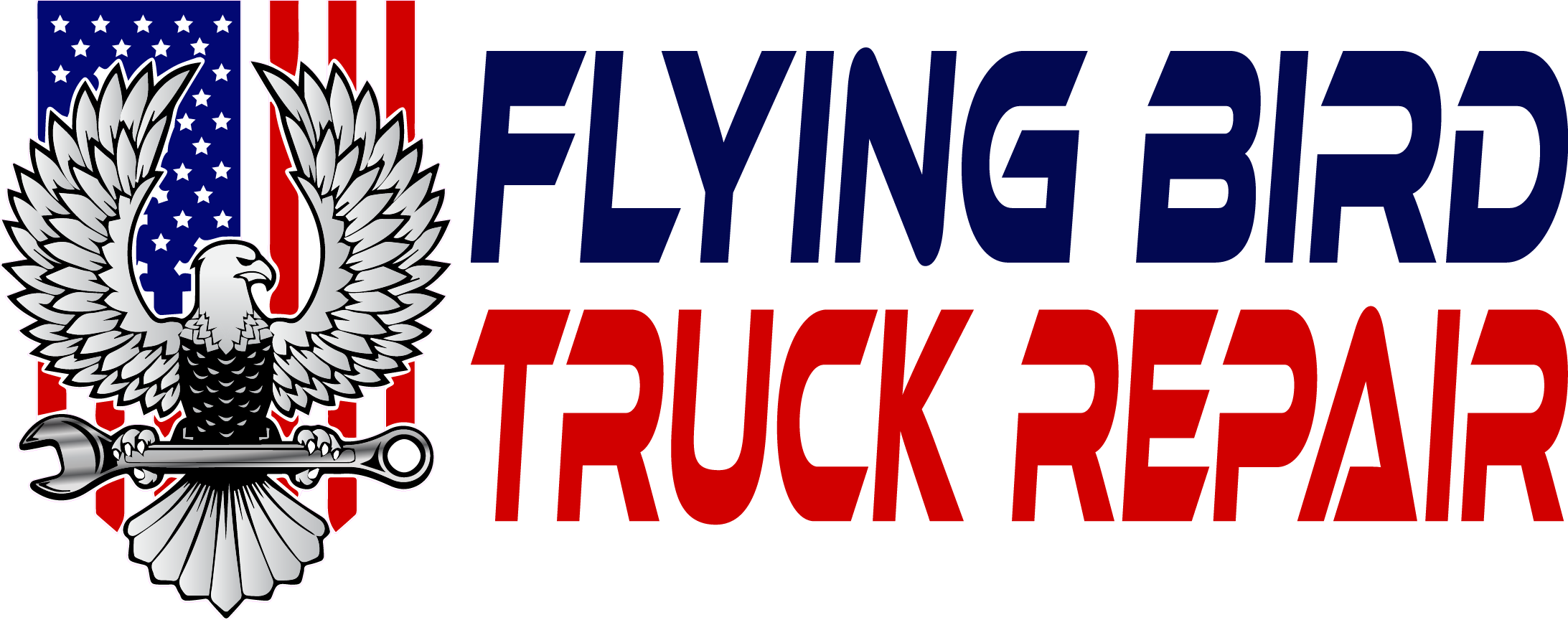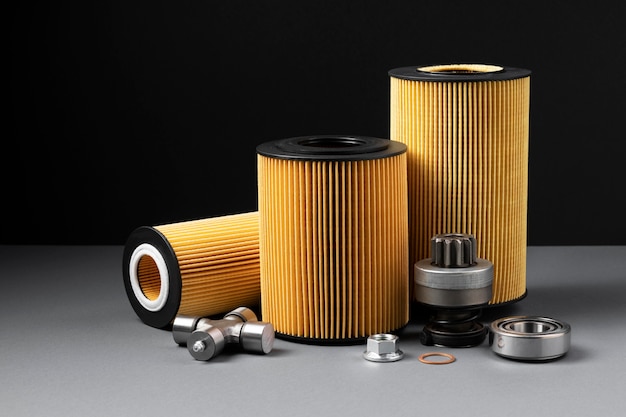Key Highlights
- Diesel particulate filters (DPFs) are crucial for reducing harmful emissions from truck exhaust
- Regular cleaning of DPFs is necessary to prevent issues and extend their lifespan
- There are different methods for cleaning DPFs, including on-board techniques and professional cleaning services
- DIY cleaning is possible but should be done with caution to avoid damage
- Preventative measures can help extend the life of DPFs and reduce the need for frequent cleaning
- Neglecting DPF cleaning can lead to costly damages and decreased truck performance
Introduction
Did you know that diesel trucks didn’t have aftertreatment systems to remove pollutants from their exhaust until 2007? While diesel engines are known for their efficiency and power, they also produce harmful emissions that can be detrimental to both human health and the environment. To combat this, trucks built since 2007 are equipped with aftertreatment systems consisting of diesel particulate filters (DPFs) and diesel oxidation catalysts (DOCs). These components work together to trap and remove pollutants from a truck’s exhaust, ensuring that it meets the emissions standards set by regulatory bodies like the Environmental Protection Agency (EPA) and the California Air Resources Board (CARB).
However, over time, DPFs can become clogged or rendered ineffective due to the buildup of particulate matter and ash. This can lead to engine problems, decreased fuel efficiency, and higher emissions levels. Regular cleaning of DPFs is essential to prevent these issues and ensure that they continue to function properly. In this ultimate guide, we will explore the different methods of cleaning truck DPFs, including the effective dpf clean method, from on-board techniques to professional cleaning services. We will also discuss the signs that indicate a truck’s DPF needs cleaning and provide preventative measures to extend the life of DPFs. So, let’s dive in and learn everything you need to know about truck DPF cleaning methods!

Understanding Diesel Particulate Filters (DPFs)
Diesel particulate filters, commonly known as DPFs, are an essential component of a truck’s aftertreatment system. These filters are designed to trap and remove particulate matter (PM) from a truck’s exhaust. PM consists of microscopic particles that are harmful to human health and the environment, and DPFs play a crucial role in reducing the release of these harmful particles into the air. DPFs use a porous honeycomb structure to capture these particles, preventing them from being released into the air. In order to function effectively, DPFs need to be cleaned periodically to remove the accumulated particulate matter and ash.
The Role of DPFs in Truck Emissions Control
DPFs play a crucial role in controlling truck emissions and reducing harmful pollutants. When the exhaust gases pass through the DPF, the particulate matter and ash are trapped in the porous structure of the filter. This process helps to remove up to 90% of particulate matter emissions, as well as reduce hydrocarbons and carbon monoxide emissions by 70-90%. By capturing these harmful pollutants, DPFs contribute to improving air quality and ensuring compliance with emission regulations set by the EPA and CARB. Without DPFs, trucks would emit higher levels of particulate matter and other harmful substances, leading to increased air pollution and negative health effects for both humans and the environment.
How DPFs Work to Reduce Particulate Matter
DPFs are specifically designed to reduce particulate matter (PM) emissions from diesel engines. When the exhaust gases flow through the DPF, the microscopic pores in its honeycomb structure trap and hold onto the PM and ash particles. This prevents them from being released into the air and ensures cleaner exhaust emissions. The DPF then goes through a process called regeneration to remove the trapped particles and remaining soot and turn it into ash. Regeneration can occur through passive, active, or manual methods.
Passive regeneration happens naturally while driving at higher speeds, as the exhaust gases reach temperatures high enough to burn off the trapped particles. Active regeneration is initiated automatically by the engine control unit (ECU) when the DPF reaches a certain soot capacity. The ECU injects additional fuel into the exhaust system, increasing the temperature and burning off the trapped particles. Manual regeneration is performed by the driver when the DPF becomes clogged and needs cleaning. The driver initiates a process that increases the engine RPM and injects additional fuel to generate the necessary temperatures for regeneration.
Signs Your Truck’s DPF Needs Cleaning
It is important to be aware of the signs that indicate your truck’s DPF needs cleaning. If you notice decreased fuel efficiency, increased frequency of regeneration cycles, or a decline in engine performance, these are potential indicators of a clogged DPF. Other signs include strong exhaust smells, reduced efficiency, or engaged cooling fans. It is crucial not to ignore these signs, as neglecting DPF cleaning can lead to costly damages and decreased truck performance. Regular cleaning and maintenance of the DPF will ensure its longevity and keep your truck running at its best.
Decreased Fuel Efficiency
One of the signs that your truck’s DPF needs cleaning is decreased fuel efficiency. A clogged DPF restricts the flow of exhaust gases, which can lead to increased back pressure in the engine. This increased back pressure causes the engine to work harder, resulting in reduced fuel efficiency. As the engine struggles to expel exhaust gases, it consumes more fuel to generate the required power. If you notice that your truck’s fuel consumption has increased significantly, it may be a sign that the DPF is clogged and needs cleaning. Regular cleaning and maintenance of the DPF will help maintain optimal fuel efficiency and save you money on fuel costs in the long run.

Increased Regeneration Frequency
Another indicator that your truck’s DPF needs cleaning is an increased frequency of regeneration cycles. Regeneration is the process by which the DPF burns off the accumulated soot and ash to prevent clogging. However, if the DPF is heavily clogged, it may require more frequent regeneration cycles, also known as a cleaning cycle, to maintain proper functioning. You may notice that your truck goes into regeneration mode more often or that the regeneration cycles last longer than usual. This increased frequency of regeneration is a clear signal that the DPF needs cleaning. Ignoring these signs can lead to further complications and potential damage to the DPF, so it is essential to address the issue promptly through cleaning and maintenance.
On-Board DPF Cleaning Techniques
Trucks are equipped with on-board techniques for cleaning DPFs, which can help prevent excessive buildup of soot and ash. These techniques include passive regeneration, active regeneration, and manual regeneration. Passive regeneration occurs naturally while driving at higher speeds, as the exhaust gases reach the required temperatures for burning off the trapped particles. Active regeneration is initiated automatically by the engine control unit (ECU) when the soot capacity of the DPF reaches a certain level. The ECU injects additional fuel into the exhaust system to increase the temperature and burn off the trapped particles. Manual regeneration, also known as on-truck DPF regeneration, is performed by the driver when the DPF becomes clogged and needs cleaning. The driver initiates a process that increases the engine RPM and injects additional fuel to generate the necessary temperatures for regeneration.
Passive vs. Active Regeneration Explained
Passive regeneration and active regeneration are two different methods by which DPFs can clean themselves. Passive regeneration occurs naturally while driving at higher speeds, as the exhaust gases reach temperatures greater than 350°C (662°F) for a sustained period of time. During passive regeneration, the soot and ash trapped in the DPF are burned off without any driver intervention. However, passive regeneration may not occur frequently enough for drivers who primarily make short trips, are frequently in stop-and-go traffic, or drive consistently in cold weather conditions.
Active regeneration, on the other hand, is initiated by the engine control unit (ECU) when the DPF reaches a certain soot capacity. The ECU injects additional fuel into the exhaust system to raise the exhaust temperature and facilitate the burning off of trapped soot and ash. Active regeneration, also known as active cleaning, is a more controlled cleaning process that is initiated automatically by the vehicle’s engine control unit. It ensures that the DPF is properly cleaned and can be done while the truck is in operation. However, it may still require the truck to be driven at higher speeds for a certain period of time to reach the necessary temperatures for regeneration.
The Importance of Manual Regeneration Cycles
Manual regeneration is an important process for cleaning a DPF when it becomes clogged and cannot self-clean through passive or active regeneration. When the DPF is clogged, the driver will be alerted through a warning light on the dashboard. At this point, it is crucial to park the truck in a safe location and initiate the manual regeneration process. Manual regeneration increases the engine RPM and injects additional fuel into the engine to generate the required temperatures for burning off the trapped soot and ash. The process typically takes about 30 minutes to complete. Performing manual regeneration when necessary helps maintain the proper functioning of the DPF and prevents further complications. It is important to follow the manufacturer’s instructions for manual regeneration and ensure that the process is carried out safely.
Professional DPF Cleaning Methods
In addition to on-board techniques, professional cleaning methods are available for thoroughly cleaning DPFs. These methods ensure that the DPF is properly cleaned and any noncombustible materials and ash are completely removed. Professional technicians use specialized cleaning devices and techniques to clean DPFs and ensure that they meet EPA standards. The three main professional cleaning methods for DPFs are thermal cleaning, pneumatic cleaning, and liquid chemical cleaning, all of which are commonly used in truck repair shops. Each method has its advantages and considerations, which we will discuss in more detail.

Thermal Cleaning: Pros and Cons
Thermal cleaning is a professional DPF cleaning method that involves heating the filter to high temperatures (typically 500-600°C or 932-1,112°F) to evaporate and oxidize built-up soot and particulate matter. This method effectively removes the trapped particles and restores the DPF’s functionality. Thermal cleaning typically takes about a day to complete, including heating and cool-down time. One of the advantages of thermal cleaning is its ability to completely remove ash and noncombustible materials from the DPF. However, it may not be suitable for all types of DPFs, as the high temperatures involved can potentially damage certain filter materials. Additionally, thermal cleaning may require specialized equipment and expertise, making it more expensive compared to other cleaning methods.
Pneumatic Cleaning: Effective Techniques
Pneumatic air cleaning is another professional DPF cleaning method that utilizes compressed air to clean the filter. This technique, also known as pneumatic blasting, involves using a high-pressure air blast to loosen and force contaminants out of the DPF. Pneumatic air cleaning is effective at removing soot and ash from the filter, restoring its functionality. It is a relatively quick and efficient method that can be performed without removing the DPF from the vehicle. The use of compressed air ensures thorough cleaning of the filter’s pores and channels, making it a popular choice among truck repair shops. However, pneumatic air cleaning may not be suitable for heavily clogged DPFs or those with excessive ash buildup. In such cases, additional cleaning methods may be required. Overall, pneumatic air cleaning is a cost-effective option that can extend the life of the DPF and improve its performance.
Liquid Chemical Cleaning: What to Know
Liquid chemical cleaning is a professional DPF cleaning method that involves the use of specialized cleaning solutions to remove particles and ash from the filter. These cleaning solutions surround the ash particles, making it easier to wash them out of the DPF. The filter is then dried in a special drying cabinet and can be reinstalled in the vehicle. Liquid chemical cleaning is an effective method for removing stubborn particles and restoring the DPF’s functionality. It is a relatively quick process that can be completed in about two hours. However, it is important to ensure that the cleaning solutions used are compatible with the DPF’s materials and do not cause any damage. Professional technicians have the expertise to select the appropriate cleaning solutions and ensure that the DPF is properly cleaned, making it an essential step in the dpf cleaning process.
Comparing DIY vs. Professional DPF Cleaning
When it comes to DPF cleaning, truck owners may wonder whether they can clean the filter themselves or if professional cleaning services are necessary. While DIY cleaning is possible, it should be done with caution. Cleaning a DPF requires specialized knowledge and equipment to ensure that the filter is properly cleaned without causing any damage. Professional cleaning services offer the expertise and resources to thoroughly clean DPFs, ensuring optimal performance and longevity. Additionally, professional cleaning methods, such as thermal cleaning, pneumatic cleaning, and liquid chemical cleaning, can effectively remove stubborn particles and ash that DIY methods may not be able to address. It is important to weigh the cost, time, and potential risks when deciding between DIY and professional DPF filter cleaning.
Safety Considerations for DIY DPF Cleaning
If you choose to clean your truck’s DPF yourself, it is important to follow certain safety considerations. DPF cleaning involves working with high temperatures, compressed air, and potentially hazardous cleaning solutions. Always wear protective gear, such as gloves, goggles, and a mask, to protect yourself from any contaminants or particles. Ensure that the cleaning area is well-ventilated to prevent the inhalation of fumes. Follow the manufacturer’s instructions for the cleaning process and use the appropriate cleaning solutions and equipment. If you are unsure about any aspect of the DIY cleaning process, it is recommended to consult a professional for guidance. Your safety and the proper functioning of the DPF should be the first step and top priorities during the cleaning process.
When to Choose Professional DPF Cleaning Services
While DIY DPF cleaning is possible, there are certain situations where professional cleaning services may be a better choice. If you are not experienced in DPF cleaning or do not have access to specialized equipment, it is recommended to seek professional assistance. Professional technicians have the expertise and resources to thoroughly clean DPFs and ensure optimal performance. Additionally, if your DPF is heavily clogged or requires additional cleaning methods, professional truck repair services may be necessary. Professional cleaning methods, such as thermal cleaning, pneumatic cleaning, and liquid chemical cleaning, can effectively remove stubborn particles and ash that DIY methods may not be able to address. Ultimately, the decision to choose professional DPF cleaning services should be based on your level of expertise, available resources, and the condition of your DPF.
Preventative Measures to Extend DPF Life
Taking preventative measures can help extend the life of your truck’s DPF and reduce the need for frequent cleaning. Regular maintenance is crucial, including following the manufacturer’s recommended maintenance schedule for the DPF. This includes periodic checks and cleaning of the DPF to prevent excessive buildup of trap soot and ash. Proper maintenance of the truck’s engine and fuel system is also important, as engine-related issues can contribute to premature DPF failures. Additionally, adopting driving habits that promote DPF health, such as avoiding unnecessary idling and driving at higher speeds, can help minimize the accumulation of trap soot and ash in the DPF.
Regular Maintenance Tips for DPF Systems
Regular maintenance of DPF systems is essential to ensure optimal performance and extend the life of the DPF. Follow the manufacturer’s recommended maintenance schedule for the DPF, including periodic checks and cleaning. This will help prevent excessive buildup of soot and ash and ultimately improve the life of your DPF. Inspect the DPF during routine maintenance and visually check for any signs of clogs or damage. If you notice any abnormalities, such as excessive particulate matter or ash buildup, it may be necessary to clean or replace the DPF. In addition to DPF-specific maintenance, maintaining the overall health of the truck’s engine and fuel system is important to prevent engine-related issues that can contribute to premature DPF failures. Regularly check and maintain the engine’s air filters, fuel filters, and perform any necessary tune-ups or repairs to ensure the longevity of your DPF.
Driving Habits That Promote DPF Health
Adopting driving habits that promote DPF health can help minimize the accumulation of soot and ash in the filter. Avoid unnecessary idling, as this can lead to incomplete combustion and increased soot production. When possible, drive at higher speeds for longer distances, as this helps to increase the exhaust gas temperature and facilitate the regeneration process. Regularly maintain the proper fuel quality and use the recommended fuel additives to prevent fuel system issues that can contribute to DPF problems. Additionally, avoid driving in conditions that may increase particulate matter emissions, such as heavy traffic or dusty environments. By following these driving habits, you can help minimize the strain on your DPF and ensure its optimal performance.
The Cost of Neglecting DPF Cleaning
Neglecting DPF cleaning can have costly consequences for truck owners. When a DPF becomes clogged and ineffective, it can lead to engine problems, decreased fuel efficiency, and higher emissions levels of harmful pollutants. The cost of neglecting DPF cleaning includes potential damages to the engine, increased fuel consumption, and the need for expensive repairs or DPF replacements. It is important to address any signs of a failing DPF promptly and perform regular cleaning and maintenance to prevent these issues. By investing in regular DPF cleaning, truck owners can avoid the costly consequences of neglecting their DPF’s health.
Potential Damages and Repairs Costs
Neglecting DPF cleaning can lead to potential damages and increased repair costs. When a DPF becomes clogged and ineffective, it can put excessive strain on the engine, leading to engine problems and decreased performance. The increased back pressure in the exhaust system can cause damage to engine components and result in costly repairs. Additionally, a clogged DPF can lead to decreased fuel efficiency, resulting in higher fuel consumption and increased operating costs. If the DPF is not properly cleaned or replaced, it may need to be replaced entirely, which can be expensive. Investing in regular DPF cleaning and maintenance can help prevent these potential damages and repair costs, ensuring the longevity and optimal performance of your truck’s DPF.
Impact on Truck Performance and Lifespan
Neglecting DPF cleaning can have a significant impact on truck performance and lifespan. A clogged DPF restricts the flow of exhaust gases, putting strain on the engine and leading to decreased performance. The engine needs to work harder to overcome the increased back pressure, resulting in reduced power output and decreased fuel efficiency. Over time, this can lead to engine problems and potentially shorten the lifespan of the truck. Additionally, a clogged DPF can result in higher emissions levels of harmful pollutants, contributing to air pollution and environmental damage. By regularly cleaning and maintaining the DPF and the system as a whole, truck owners can ensure optimal performance, extend the lifespan of their vehicles, and reduce their impact on the environment.
Conclusion
In conclusion, understanding the critical role of Diesel Particulate Filters (DPFs) in truck emissions control is essential for maintaining optimal performance and longevity. Regular maintenance, timely cleaning, and choosing the right cleaning methods can significantly impact your truck’s fuel efficiency and overall performance. Whether opting for professional DPF cleaning services or considering DIY techniques, prioritizing the health of your DPF system is key to preventing costly damages and ensuring a prolonged lifespan for your truck. Stay informed, adhere to recommended maintenance schedules, and adopt driving habits that support DPF health to maximize efficiency and minimize repair costs in the long run.
Frequently Asked Questions
How often should a truck’s DPF be cleaned?
The frequency of DPF cleaning depends on several factors, including the truck’s duty cycle, driving conditions, and the manufacturer’s recommendations. Generally, DPFs should be cleaned every 120,000 to 200,000 miles or every six to 12 months to prevent excessive buildup of soot and ash. However, some trucks may require more frequent cleaning depending on their usage.
Can I clean my truck’s DPF myself?
While it is possible to clean a truck’s DPF yourself, it is important to do so with caution. DPF cleaning requires specialized knowledge and equipment to ensure proper cleaning and prevent damage to the filter. If you choose to clean the DPF yourself, follow the manufacturer’s instructions and take necessary safety precautions.
What are the signs of a failing DPF?
Signs of a failing DPF include decreased fuel efficiency, increased regeneration frequency, decline in engine performance, strong exhaust smells, reduced efficiency, and engaged cooling fans. These signs indicate a potential clogged DPF that requires cleaning to restore optimal performance.
Does DPF cleaning improve fuel efficiency?
Yes, DPF cleaning can improve fuel efficiency. A clean DPF allows for proper exhaust flow, reducing back pressure on the engine and enabling it to operate more efficiently. Regular DPF cleaning helps maintain optimal fuel efficiency and saves on fuel costs.

















